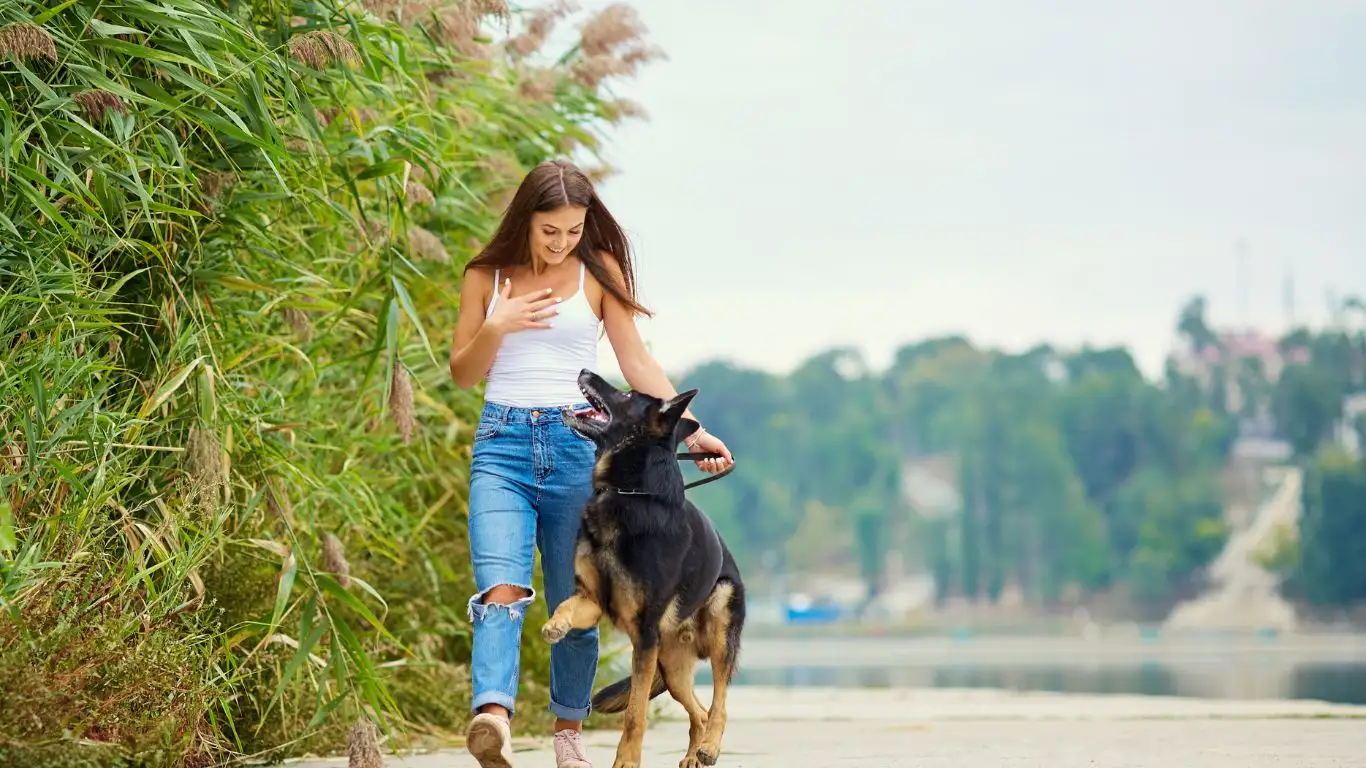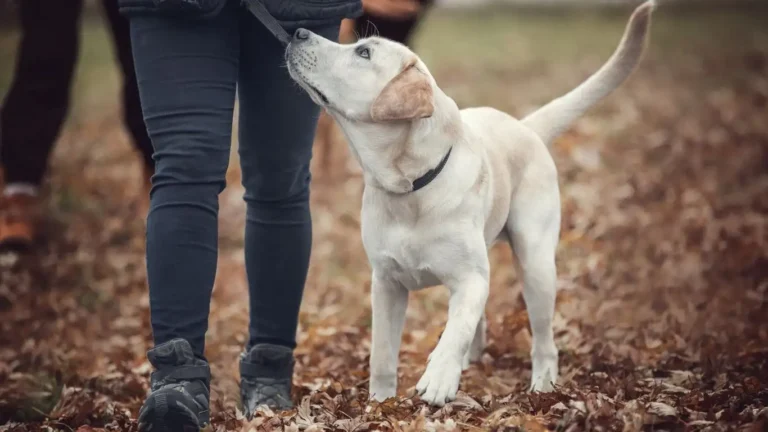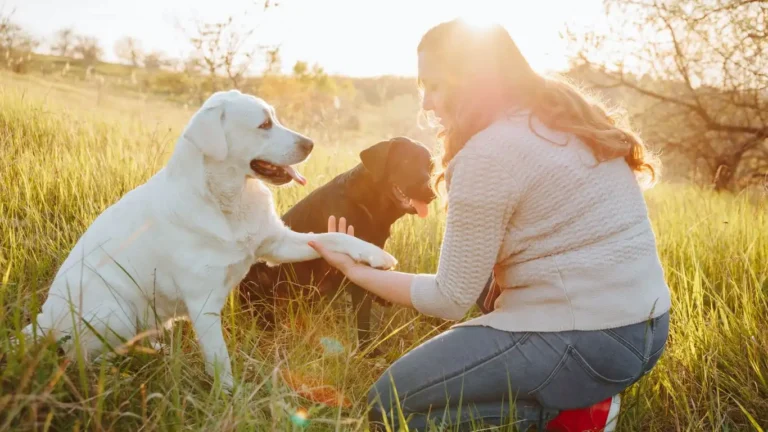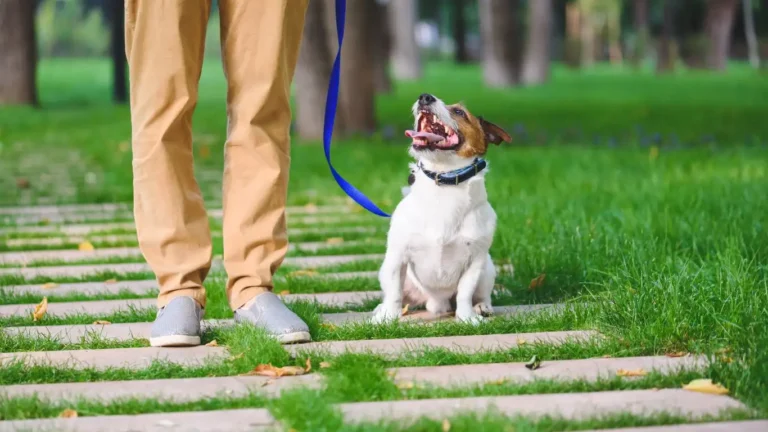How to Train Your Dog to Stop Barking at Other Dogs on Walks: Effective Tips & Tricks
If you’re a dog owner, you’ve likely experienced the frustration of your dog barking uncontrollably at other dogs while out on walks. Whether it’s a small, yappy dog or a larger, more vocal breed, excessive barking during walks can create a stressful experience for both you and your dog. As a Certified Professional Dog Trainer (CPDT-KA), I can tell you firsthand that this behavior isn’t uncommon, but it’s also not something you have to live with. In this article, we’ll dive into how to train a dog to stop barking at other dogs on walks, so both you and your pup can enjoy your daily strolls without all the noise.
Understanding Why Dogs Bark at Other Dogs
Before we dive into training techniques, it’s important to understand why your dog might be barking at other dogs in the first place. The reason behind this behavior can vary depending on your dog’s personality, age, and past experiences. For many dogs, barking at other dogs on walks can stem from a mix of excitement, anxiety, or even a desire to protect their territory. Here’s a quick rundown of the most common reasons dogs bark at other dogs:
- Excitement: Some dogs simply get overly excited when they see another dog. This is especially common in puppies and younger dogs who may not yet have learned how to control their impulses.
- Fear or Anxiety: Dogs who are nervous or fearful might bark at other dogs as a way of defending themselves or signaling that they’re uncomfortable.
- Territorial Behavior: If your dog is particularly protective of you or their space, they may see another dog as an intruder and bark to establish boundaries.
- Socialization Issues: Dogs that haven’t been properly socialized or exposed to a variety of other dogs during their formative months might not know how to interact calmly with other canines.
Is Your Dog’s Barking Normal or a Problem?
Now, it’s natural for dogs to bark. It’s their way of communicating with us and the world around them. However, when barking becomes excessive or uncontrollable, it’s important to step in and address the behavior. So how can you tell if your dog’s barking is a simple reaction or something that needs more focused training?
- Short bursts of barking: If your dog barks only briefly when encountering another dog and then moves on, this may just be a normal reaction.
- Prolonged or repetitive barking: If your dog continues barking for long periods, especially after the other dog has passed, it can be a sign that they need more training and behavior management.
- Signs of aggression: Barking that is accompanied by growling, lunging, or stiffening of the body indicates that your dog may be feeling aggressive or threatened.

How to Train a Dog to Stop Barking at Other Dogs on Walks
Training your dog to stop barking at other dogs on walks requires patience, consistency, and a bit of know-how. As with any type of behavior modification, the key is to reward desirable behavior and redirect unwanted behavior. Here’s a step-by-step guide to get you started:
Step 1: Set the Scene
Before you begin training, it’s important to set the right environment. You want to avoid situations that are too overwhelming for your dog. Try starting in a quieter area where you’re less likely to encounter many other dogs. If your dog is particularly reactive, it’s best to start training when they’re not yet too overstimulated by their surroundings.
Step 2: Use Positive Reinforcement
Positive reinforcement is one of the most effective tools in dog training, and it’s absolutely crucial for teaching your dog to stop barking at other dogs on walks. Every time your dog remains calm and quiet in the presence of another dog, reward them with praise, treats, or play. It’s important to catch your dog being good and reward them immediately. This helps them associate calm behavior with good things.
For example, if your dog sees another dog from a distance but remains quiet, say “good boy/girl” and give them a treat. If they start barking, gently redirect them away and try again when they’re calm.
Step 3: Manage the Environment
If your dog is particularly reactive, you may need to manage the environment to set them up for success. For example, if you know there’s a dog park nearby, it’s best to avoid that area until your dog can handle the sight of other dogs without barking. You can also try using distance to your advantage. The more distance you can maintain between your dog and the other dog, the better your chances of getting your dog to stay calm.
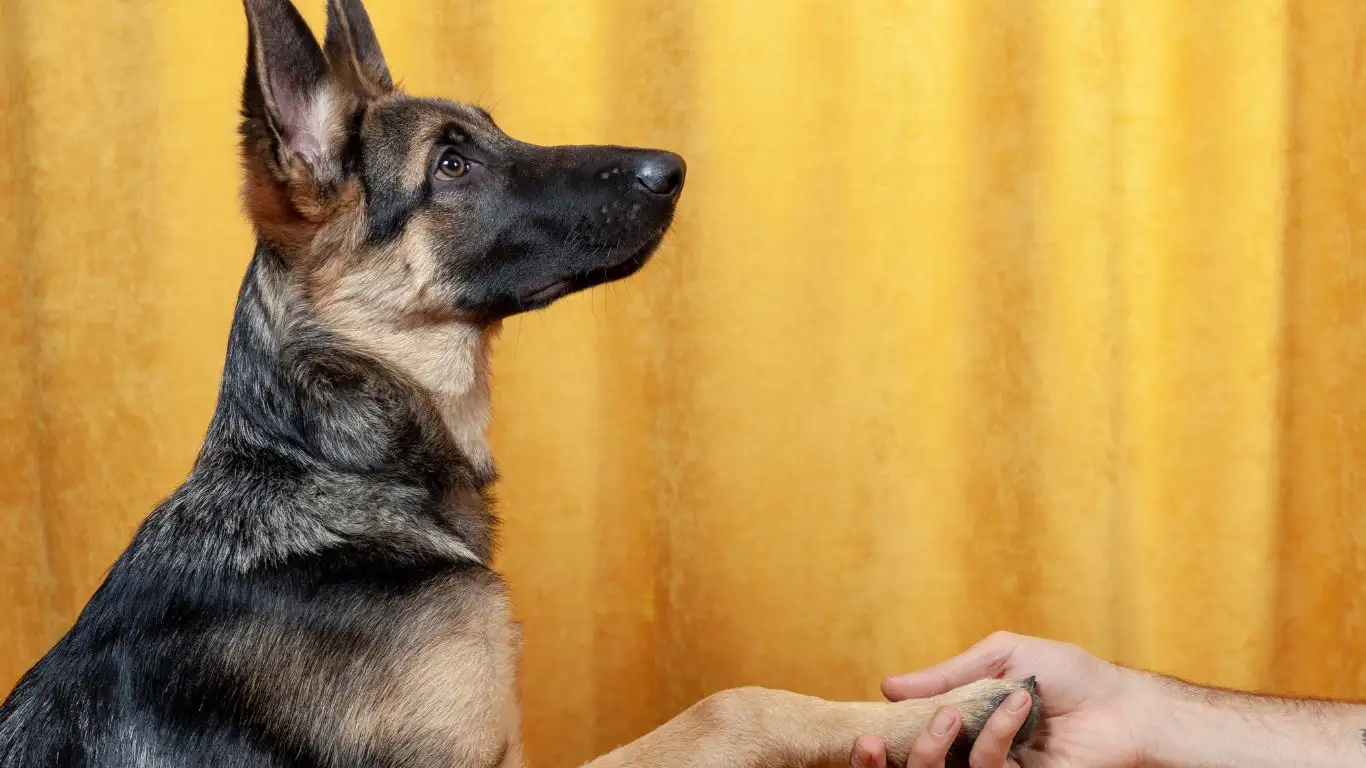
Step 4: Practice the “Look at That” Game
One of my personal favorite techniques for teaching dogs to stop barking at other dogs on walks is called the “Look at That” game. The goal of this game is to teach your dog to look at other dogs calmly without reacting. Here’s how it works:
- When you see another dog approaching, wait for your dog to notice the other dog.
- As soon as your dog looks at the other dog, say “look at that!” in a happy, upbeat tone.
- Immediately reward your dog with a treat and praise when they look at the other dog but don’t bark.
- If your dog starts barking, gently redirect their attention by asking for a sit or another behavior they know, then reward calm behavior when they comply.
With consistent practice, your dog will learn to associate seeing another dog with calmness and rewards, rather than barking. Over time, you can gradually reduce the distance between your dog and other dogs as their behavior improves.
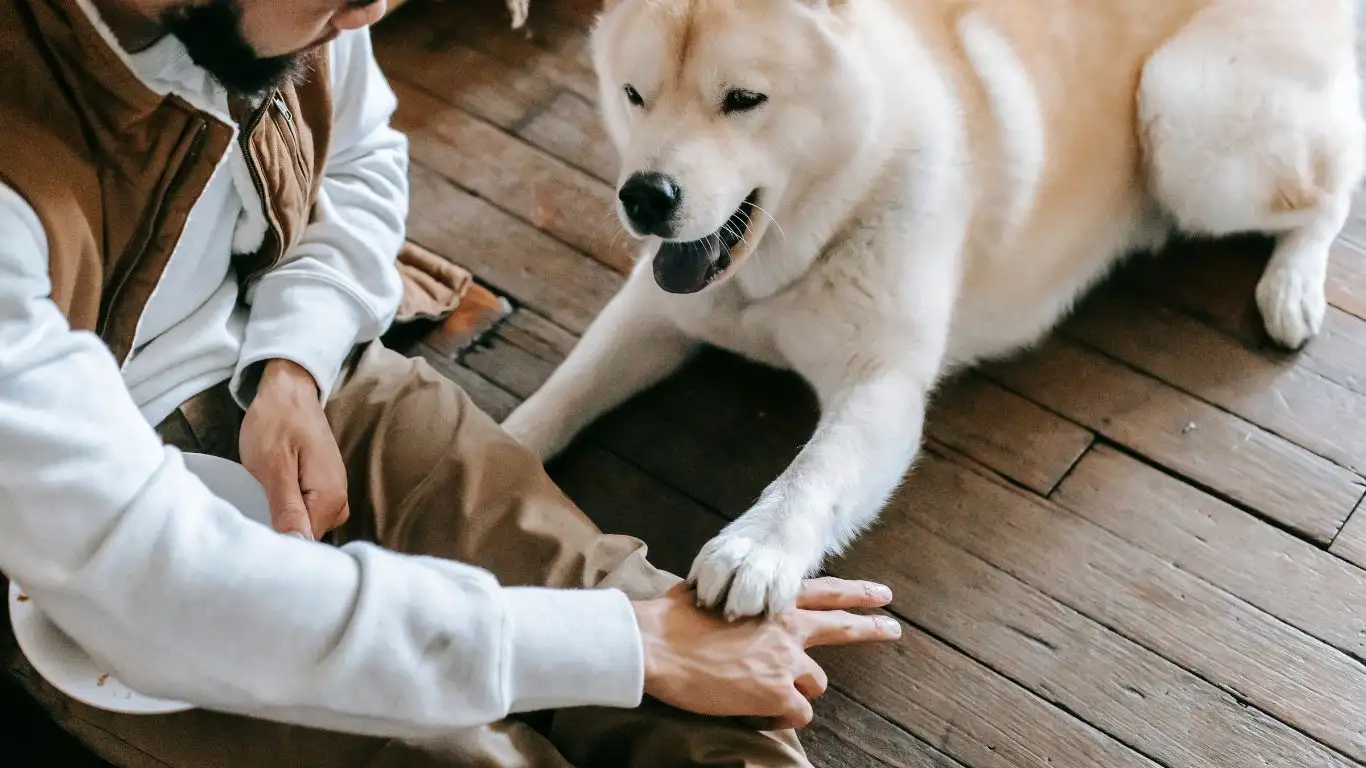
Step 5: Stay Calm and Consistent
Finally, one of the most important things you can do is stay calm and consistent. Your dog picks up on your energy, so if you’re feeling anxious or frustrated, your dog may become more reactive. If you stay calm and consistent in your approach, your dog will feel more relaxed and learn to mirror your behavior. Training takes time, but with the right mindset and technique, your dog will get there.
Reinforcing Calm Behavior Over Time
So far, we’ve talked about starting your training and using positive reinforcement to get your dog to stop barking at other dogs on walks. But here’s the thing—this isn’t a one-and-done kind of situation. Training takes time, consistency, and patience. It’s important to keep reinforcing calm behavior, even as your dog starts to improve. The more you practice, the easier it will get for both of you.
Consistency Is Key
Consistency is one of the biggest factors in helping your dog learn to stay calm around other dogs. When you’re out on walks, make sure you’re always ready to reward good behavior and redirect bad behavior. One thing I tell my clients all the time is that training happens every single time you’re out with your dog—not just during formal training sessions.
If you let your dog bark at another dog on one walk and then try to correct it the next time, your dog will get mixed signals. They won’t understand why sometimes barking is okay and other times it’s not. So, whether you’re out for a quick stroll or a longer walk, be prepared to manage the situation in a way that reinforces calmness. The more consistent you are, the quicker your dog will pick up on the fact that staying calm means good things happen!
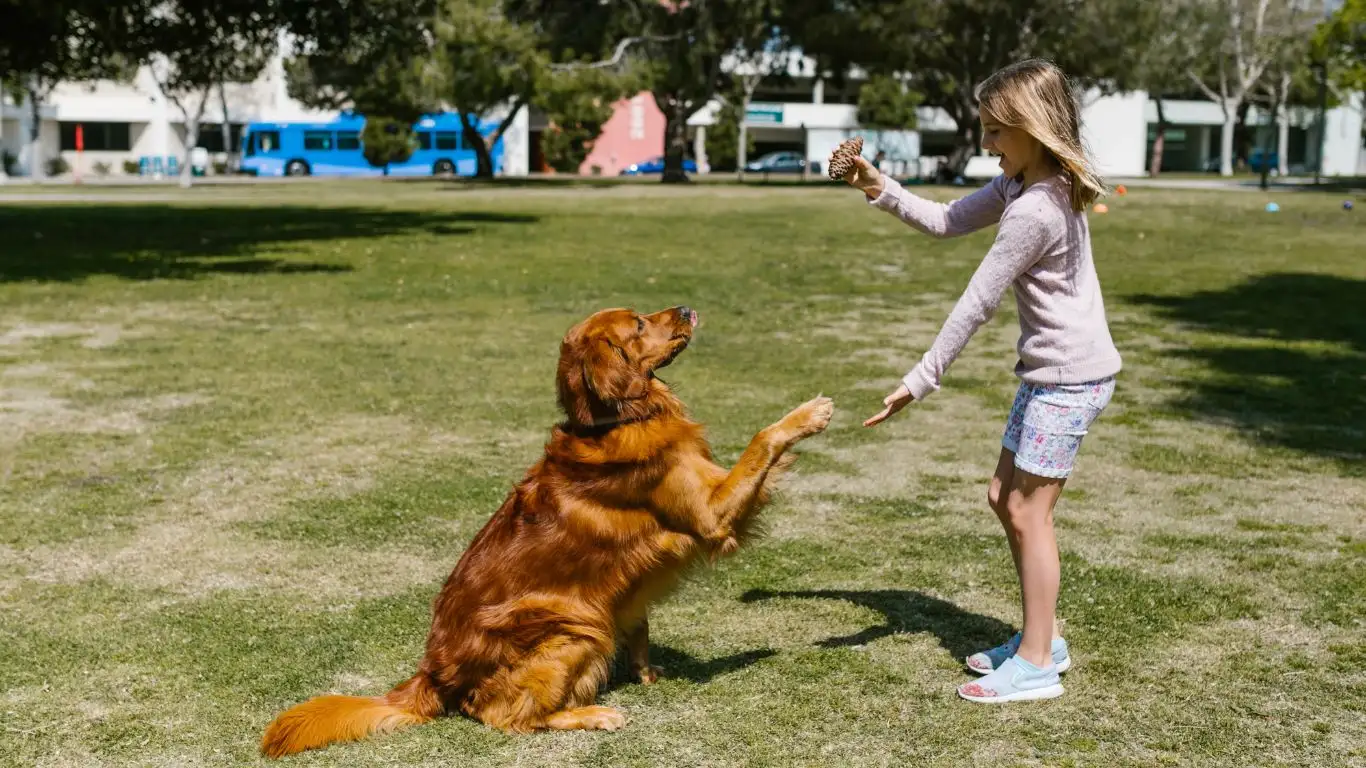
Gradually Increase the Challenge
Once your dog is starting to make progress and can handle seeing other dogs at a distance, it’s time to increase the challenge. This doesn’t mean throwing your dog into a busy park filled with dogs all at once. Instead, gradually expose your dog to more situations where they might encounter other dogs. Start by walking closer to other dogs but still at a manageable distance. Over time, you can reduce that distance as your dog’s behavior improves.
Gradual exposure is key because it gives your dog the opportunity to practice remaining calm without overwhelming them. If they start getting too excited or anxious, just take a step back, increase the distance again, and give them time to calm down. Remember, this is a marathon, not a sprint, so don’t rush the process.
Using Distractions to Help Keep Your Dog Focused
One helpful technique to redirect your dog’s attention away from barking at other dogs is using distractions. This can be particularly useful when you’re walking in an area where there are frequent encounters with other dogs. Distractions can help your dog stay engaged with you rather than focusing on the other dog. Here are some distractions you can use to keep their attention:
- Training Cues: When your dog starts to fixate on another dog, ask them to perform a behavior they know well, like sitting or lying down. Giving them something to do will redirect their focus back to you.
- Treats or Toys: Bring along some high-value treats or a favorite toy to grab your dog’s attention. When they see another dog, use the treat or toy to redirect their focus onto you and reward them for staying calm.
- Engaging with Play: If your dog enjoys playing fetch or tug-of-war, use play as a way to distract them from the other dog. It’s a great way to keep their energy directed in a positive way.
Be Ready for Distractions in High-traffic Areas
If you live in a neighborhood or area with a lot of foot traffic, it’s especially important to be proactive in managing distractions. There might be people, other dogs, or even cyclists passing by, and it can be tough to control how your dog reacts to all the stimuli. In these situations, I recommend carrying treats or a toy at all times. If your dog gets distracted or starts barking, you can redirect them back to you before things get out of hand.
Sometimes, just stepping off the path for a moment and letting your dog refocus can work wonders. A quick pause allows them to reset and relax, and then you can continue the walk with fewer distractions.

How Leash Training Plays a Role
Leash training plays a huge role in preventing your dog from barking at other dogs. When you’re out on walks, the leash is a tool you can use to manage your dog’s behavior. If your dog pulls or lunges towards another dog, you can gently guide them back to your side, redirecting their focus to you. A well-trained leash response can help you maintain control over your dog’s actions and reduce the chances of barking at other dogs.
Using the Leash to Create Space
In many situations, creating some space between your dog and the other dog can help prevent barking. If your dog starts to get too excited, pull them away from the other dog gently. Don’t yank on the leash; instead, use a firm but calm “let’s go” cue, and guide them in a different direction. This gives your dog the opportunity to refocus and reset without being overwhelmed by the presence of another dog.
In my experience, dogs that are taught to walk calmly on a leash are far less likely to bark at other dogs. They feel more controlled, and you have a much better chance of redirecting their attention when needed. So, continue to reinforce leash training as part of the broader plan to stop barking at other dogs.
Don’t Forget About Your Own Energy
Lastly, don’t forget that your own energy plays a big part in your dog’s behavior. If you’re tense, anxious, or frustrated while walking your dog, they’re likely to pick up on those feelings and become more reactive. On the other hand, if you stay calm, relaxed, and confident, your dog is more likely to mirror that behavior.
One thing I like to tell my clients is to take deep breaths, smile, and stay calm. Your dog will look to you for guidance, and the calmer you are, the more likely they’ll stay calm, too. It’s a bit of a mindset shift, but it really makes a difference.
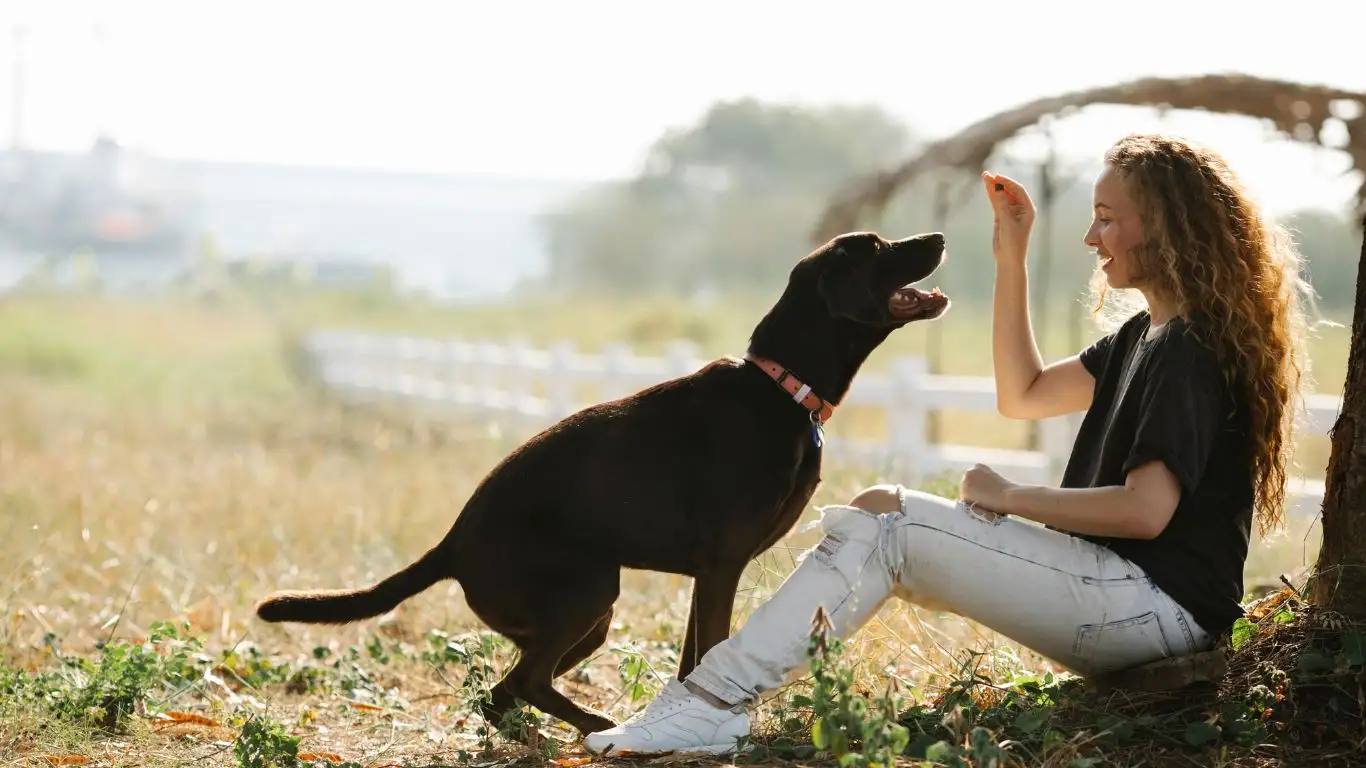
When to Seek Professional Help
While most dogs can be trained to stop barking at other dogs with time and patience, there are some situations where it might be best to seek professional help. If your dog’s barking is accompanied by signs of aggression (like growling, showing teeth, or lunging), or if you’re not seeing any progress despite your efforts, it might be time to work with a professional dog trainer.
As a CPDT-KA, I often work with clients whose dogs have more serious behavioral issues. Sometimes, it takes a more tailored approach to address deeper-rooted issues like fear, anxiety, or territorial aggression. A professional trainer can assess the situation and create a customized training plan that works for you and your dog.
Understanding Setbacks and How to Handle Them
By now, you’ve made progress in training your dog to stop barking at other dogs on walks. But let’s be real—setbacks are a part of the process. No dog trainer, no matter how experienced, has a perfect record with every dog. Sometimes, even after weeks or months of great progress, you might find your dog slipping back into old habits. The important thing is to stay calm, reassess, and adjust your training methods as needed.
Why Setbacks Happen
Setbacks can happen for a variety of reasons. Maybe your dog is in a new environment, or there’s been a change in their routine. They could be feeling stressed or overstimulated, or perhaps a particular dog they encounter on a walk triggers a stronger response than usual. For example, if you’re walking in a new park or on unfamiliar routes, your dog might feel more alert or anxious, which could lead to barking.
In these situations, it’s important to remember that setbacks are a normal part of the training process. Dogs, like people, have their off days. They might also react differently depending on the situation, so don’t get discouraged if you don’t see immediate, perfect results every time. What matters is your ability to reset and continue with your training plan, making small adjustments as needed.
How to Handle Setbacks
When a setback happens, the first thing I recommend is to take a deep breath and stay calm. Your dog is looking to you for guidance, and if they sense frustration or stress from you, it could make the situation worse. Instead, focus on the positive progress your dog has made so far, and remember that a little hiccup here and there doesn’t mean you’ve failed.
Here’s how I usually approach setbacks in my training sessions:
- Reassess the situation: Is there something in the environment that might be contributing to the behavior, like a new dog or an unusually loud noise? Sometimes adjusting your walk or giving your dog a little more space can help them calm down.
- Go back to basics: If your dog is having trouble staying calm, take a step back and practice some simpler exercises, like basic leash walking or focusing on you with treats. Sometimes reinforcing basic skills can help your dog feel more in control.
- Be patient: Give your dog time to recover from the situation. If they’re still worked up, pause, take a break, and try again once they’ve calmed down. Pushing forward too quickly can make your dog more anxious and frustrated.

Understanding the Role of Exercise and Mental Stimulation
Another crucial aspect of stopping your dog from barking at other dogs on walks is ensuring that your dog is getting enough physical and mental exercise. A well-exercised dog is typically less reactive because they’ve burned off that excess energy that can contribute to barking and other undesirable behaviors.
Physical Exercise
Physical exercise is vital for every dog, especially if you’re dealing with a high-energy breed. If your dog isn’t getting enough exercise throughout the day, they may be more likely to bark at other dogs simply because they have pent-up energy they need to release. If you can, try to add more playtime, runs, or even an extra walk during the day to help your dog tire out before their regular walks.
For some dogs, the extra exercise can significantly reduce barking on walks. Once they’ve had a good run or play session, they’re often in a much calmer, more relaxed state and less likely to be triggered by other dogs. Exercise also helps with overall health, so it’s a win-win!
Mental Stimulation
In addition to physical exercise, mental stimulation is just as important. Dogs need mental challenges to stay engaged and prevent boredom. If your dog doesn’t have enough to do during the day, they might turn to barking or other attention-seeking behaviors. Puzzle toys, training sessions, and scent games are fantastic ways to engage your dog’s mind and tire them out in a different way.
On walks, try introducing mental challenges by asking your dog to perform tricks or tasks along the way. For example, ask them to “sit” or “stay” at a particular spot, or use a treat to guide them through some simple obedience commands. This kind of mental exercise can keep them focused on you rather than on the other dogs around them.
Training Tools That Can Help
Sometimes, a little extra support in the form of training tools can be a helpful addition to your routine. While tools alone won’t fix the issue, they can assist in reinforcing training and providing more control during walks. Here are a few tools I’ve found helpful when training dogs to stop barking at other dogs:
Head Halters or Front-Clip Harnesses
Head halters and front-clip harnesses are fantastic tools for dogs that tend to pull or lunge during walks. The design of these harnesses helps you control your dog’s direction, making it easier to redirect their attention when needed. When your dog starts barking or pulling toward another dog, these tools give you more leverage to gently guide them away from the situation.
Just be sure to introduce these tools slowly and positively, so your dog doesn’t associate them with negative experiences. With the right approach, they can make walks much more enjoyable for both of you.
Interactive Leashes
Some trainers recommend using interactive leashes, which provide a bit of flexibility while still giving you control. These leashes can be a good option for dogs who need a little extra space to move around, but they still allow you to maintain control if your dog becomes overexcited. Interactive leashes can also help you practice leash training without the constant tension of a regular leash.
When You Need Professional Help
While most dogs can be trained to stop barking at other dogs with consistent work, there are situations where you might need extra help. If your dog’s barking is severe or if they exhibit other signs of aggression (like growling, showing teeth, or lunging), it may be time to consult with a professional dog trainer.
As a CPDT-KA, I often work with dogs who are dealing with more complex behavioral issues. A professional trainer can assess your dog’s specific needs and create a customized training plan that fits your situation. If you’re finding that your progress is slower than expected or you’re unsure how to proceed, reaching out for professional guidance can make a big difference in getting your dog back on track.
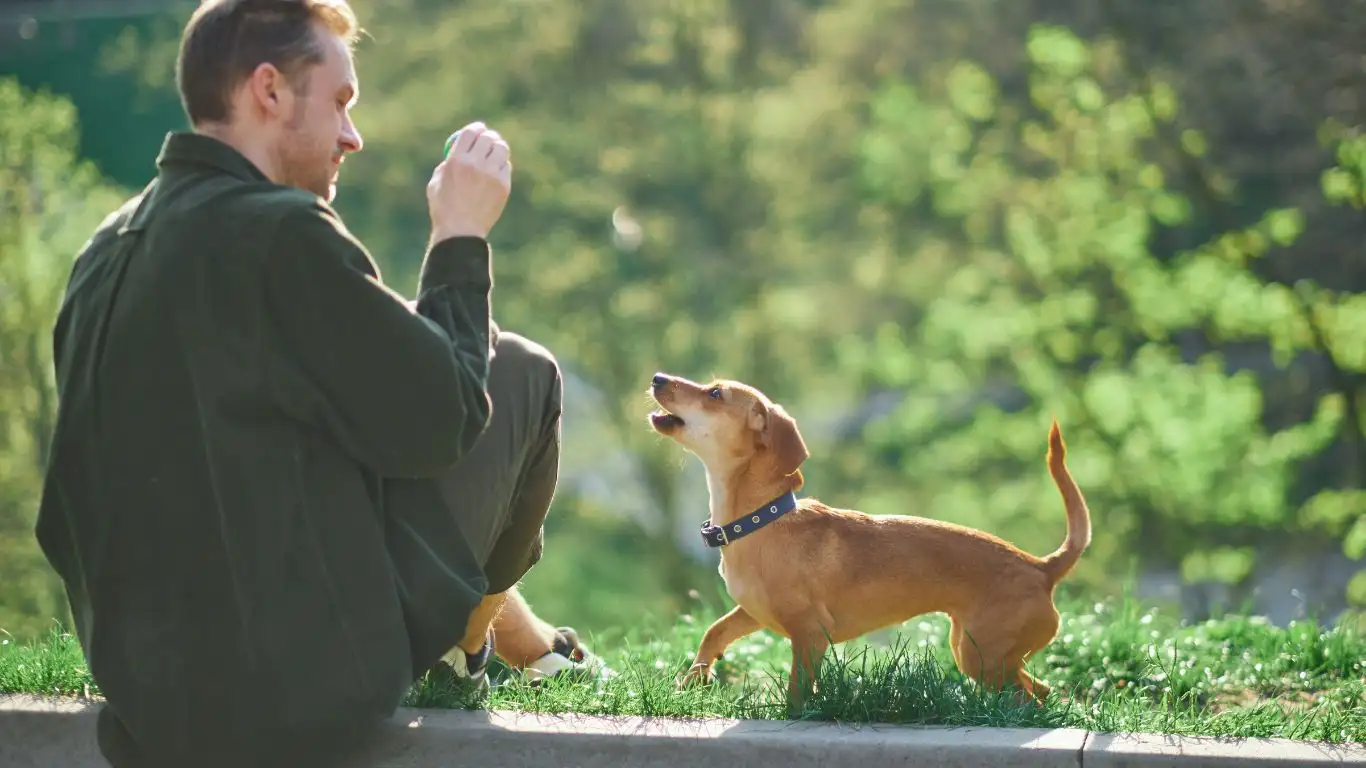
Disclaimer
It’s important to note that every dog is unique, and what works for one dog may not work for another. The information in this article is based on years of professional experience as a Certified Professional Dog Trainer (CPDT-KA), but always remember that your dog’s specific temperament and needs should be taken into account. If you’re ever unsure about how to proceed with your dog’s training, consulting a professional trainer in person may be the best option.
Also, please remember that training takes time. Don’t expect overnight results. With patience, consistency, and the right approach, your dog will learn to be more relaxed and calm on walks. Keep practicing, and don’t hesitate to ask for help when needed. Good luck on your journey to calmer, more enjoyable walks with your dog!
For more information on dog training, visit our [dog training resources](https://pawpatron.org).
